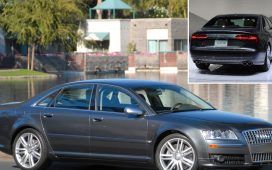A Union Pacific (UP) freight train derailed around 6 am Monday morning on the east end of the Steel Bridge, halting all travel across the bridge for more than four hours. While the bridge reopened to all modes of traffic after local transportation agencies conducted a safety inspection, some transportation and environmental advocates say the event should be a wake-up call about the Steel Bridge’s increasing vulnerability and the risks posed by transporting oil by rail.
According to Portland Fire & Rescue (PF&R), six UP cars on a multi-modal train were involved in the derailment. One of the derailed cars ended up leaning against a bridge structural support column, raising concerns about the potential for structural damage.
PF&R Lt. Laurent Picard said the train was carrying a mix of lumber, propane and other hazardous materials, though it’s unclear how much of each commodity was in the derailed cars. No injuries have been reported.
PF&R was the first agency dispatched to the scene.
“The first thing we do is conduct a life safety assessment, to determine if there are any injuries,” Picard said. “Then we want to make sure what’s in the [train] cars doesn’t pose any community or environmental hazards.”
It’s not clear what caused the derailment.
Train derailments are very common in the United States, with about three occurring every day, and they usually don’t result in significant damage. Derailments also happen less frequently now than they did in the past—in the late 1970s, the incidents occurred about eight times as often. However, derailments still pose big risks. And in the worst case scenario, a derailed freight train carrying hazardous material could cause a major environmental catastrophe.
Travel impacts
The Steel Bridge, built in 1912, is one of the country’s oldest operating lift bridges. Despite its vulnerability, especially in the case of a seismic event, the bridge is a vital travel route for the entire region: Lt. Picard called it the “hardest working bridge in the city.” In addition to the rail needs the bridge serves, the bridge’s top deck is also well-used by people driving cars, and the lower deck is a crucial bike and pedestrian route across the Willamette River.
Monday’s derailment put all of that travel on pause. This was especially disruptive for TriMet, as all of Portland’s light rail trains cross the Steel Bridge, with no alternative route. The Amtrak Cascades and Coast Starlight trains also travel across the bridge.
One potential solution for local light rail: The proposed MAX tunnel through downtown Portland. In a 2019 study, Oregon Metro examined the potential for a light rail tunnel running from under the Willamette River from Lloyd Center to Goose Hollow. The study describes how the Steel Bridge is a major vulnerability in the MAX system, saying the bridge’s “age and condition already requires increasing maintenance, and bridge closures and lifts disrupt the entire system.”
“A MAX tunnel would add a resource to the regional transportation network that would be resilient to natural disasters and other regional disruptions,” the study says.
The tunnel, which was estimated to cost between $900 million and $1.9 billion in 2019, is not currently funded.
Environmental risks
Another major concern about freight train derailments is the potential for major environmental and health impacts, in the case of a derailment involving a train carrying oil and hazardous chemicals. While the derailment on the Steel Bridge didn’t yield any immediate environmental threats, local environmental advocates used the incident as an opportunity to highlight the risks oil trains pose in Portland.
Much of Oregon’s fuel supply is transported through Portland by train to the Critical Energy Infrastructure (CEI) hub, located on the west side of the Willamette River in the Northwest Industrial Area and near Forest Park. A 2016 report from Multnomah County’s Office of Sustainability lays out the risks of oil-by-rail transport in the county, which has increased over the last over the last decade. The report says in the case of a major train derailment, “impact…will extend beyond the immediately impacted area due to a toxic smoke plume.”
One of the companies located in the CEI hub is Zenith Energy. Zenith—armed with support from city officials—plans to expand the amount of oil it transports through Portland in the coming years. Environmental advocates say this is a disaster waiting to happen.
Nick Caleb, climate and energy attorney at Breach Collective, said he was “grateful for another near miss” when he saw the news of the train derailment this morning.
“Our city officials and state regulators must start taking this issue seriously, and they can do so by immediately saying no to Zenith Energy’s planned expansions,” Caleb told the Mercury. “They know the risks and their failure to protect the public is unconscionable.”
The Oregon Department of Transportation will continue to investigate the derailment’s impacts.








